This is my guide to Macs that you probably don’t see every day and that might be worth more than the average Mac a few decades from now. Many of them are very solid systems and are rare for reasons other than their design, while several others are Road Apples.

Here they are in chronological order:
Backlit Portable
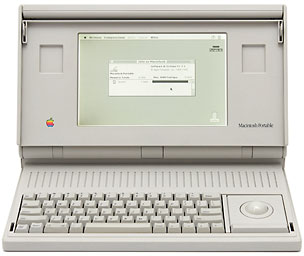 This late version of the Mac Portable shipped only in 1991 a few months before the PowerBooks were released. It sports a screen backlight, which the normal Portable didn’t have, and also takes different RAM cards. The Backlit Portable constitutes a vast minority of Portable sales, which were weak to begin with.
This late version of the Mac Portable shipped only in 1991 a few months before the PowerBooks were released. It sports a screen backlight, which the normal Portable didn’t have, and also takes different RAM cards. The Backlit Portable constitutes a vast minority of Portable sales, which were weak to begin with.
Finding one in working condition is more difficult still, since you’re dealing with a computer that won’t boot without a working battery, even with an AC adapter – and its battery can easily die from age (it is a 10-year-old computer, after all) or over-discharging. You can get around this by using a 9V transformer and wiring it to the battery contacts, however.
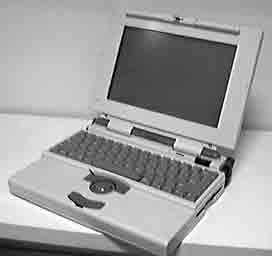
White PowerBook 170
This was a special-edition PowerBook released to celebrate Apple’s 15th anniversary. It was essentially a PowerBook 170 with white plastics. Only a tiny batch of these were made. I found a picture of one once, and now I can’t find it at all. Considering that Google is around now and wasn’t when I found it proves the extreme rarity of this Mac. There are bound to be a few out there, somewhere.
Mac TV
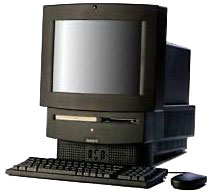 This was a modified LC 550 with an integrated TV tuner in an all black case. They also have a distinctive clear microphone housing. These were sold only at a small number of consumer electronics stores, not necessarily the best environment for selling Macs, and they sold very slowly. A Mac TV is now a big collector’s item, especially with it’s companion black keyboard and mouse, and even more so with its often-lost remote control.
This was a modified LC 550 with an integrated TV tuner in an all black case. They also have a distinctive clear microphone housing. These were sold only at a small number of consumer electronics stores, not necessarily the best environment for selling Macs, and they sold very slowly. A Mac TV is now a big collector’s item, especially with it’s companion black keyboard and mouse, and even more so with its often-lost remote control.
DOS Compatibles
The Quadra 610 DOS Compatible, LC 630 DOS Compatible (a.k.a. Performa 640CD), and Power Mac 6100/66 DOS Compatible were essentially similar to their non-DOS counterparts except for the addition of a 25 to 66-MHz Intel 486 processor that allowed them to be booted MS-DOS and run DOS programs just like a PC with comparable specs. The reason these are so rare is not because they sold too slowly but rather that they sold too well. The Quadra 610 DOS was the first one introduced, and Apple made a very limited production run of them. They sold out within a few months and, being skittish about supporting PCs, Apple decided not to produce any more.
A few months later, Apple brought out the LC/Performa 630 series, and made a small batch of DOS compatible versions of it. They also sold out very quickly, and Apple again chose to not make any more. By the beginning of 1995, you would have thought Apple would have made up its mind about DOS Compatible systems. But this is “mid-90s Apple,” so it’s not that easy. And lo and behold, Apple released another DOS-running machine based on the 6100/66. It, of course, sold out quickly and was discontinued in less than five months. Oh, the humanity!
These systems are rare any way you slice it, but the most rare of these is the LC 630 that shipped with a Cyrix 70 MHz chip rather than the Intel 486DX2.
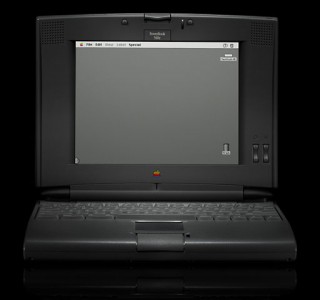 PowerBook 550c
PowerBook 550c
Basically a PowerBook 540c with a FPU-equipped 68040, black plastics, and a “gorgeous” 10.4-inch screen, the PB 550c was manufactured for only three months and sold only in Japan. It can be fitted with a US keyboard from another 500-series PowerBook, although it will be gray in color rather than black like the Japanese keyboard.
PowerBook 500 Series with PowerPC
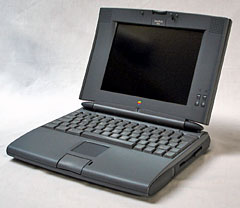 Yes, that’s actually it’s model name. Simply a 540c shipped with an Apple 100 MHz 603e upgrade card, it was introduced the same time as the PowerBook 5300 and 190. Since Apple shipped only around 6000 PowerPC cards for 500-series PowerBooks, and most were sold as upgrades for older machines, these are quite rare. They are also rather difficult to tell apart from a 540c with the Apple upgrade installed later; you pretty much have to go back to its original purchase receipt to find out.
Yes, that’s actually it’s model name. Simply a 540c shipped with an Apple 100 MHz 603e upgrade card, it was introduced the same time as the PowerBook 5300 and 190. Since Apple shipped only around 6000 PowerPC cards for 500-series PowerBooks, and most were sold as upgrades for older machines, these are quite rare. They are also rather difficult to tell apart from a 540c with the Apple upgrade installed later; you pretty much have to go back to its original purchase receipt to find out.
Power Mac 9500/180MP and 9600/200MP

These were Apple’s first dual-processor systems, both based on the 604e chip. They sold horribly due to the fact that next to nothing could take advantage of the second processor. Photoshop can, but only parts of it will recognize that second chip. Plus there was no promise of Mac OS X with symmetric multiprocessing back in 1997 that could make users want to buy one for its future capabilities. These make great systems now, however, and with an “unsupported” installation, will run Mac OS X better than any other pre-G3 system.
Power Mac 9600/350
The 9600/350 was introduced just three months before the first G3 and sold for over $5,000. By the time the G3s came out – with comparable performance for half the price – Apple hadn’t been able to get a single 9600/350 out of the factory. To quell the rising backlog, Apple simply discontinued it. Vast quantities of backorders were then canceled as people switched to the G3. Although outstanding orders were filled, they were few and far between.
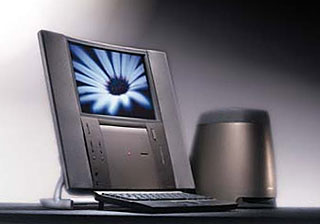 Twentieth Anniversary Mac
Twentieth Anniversary Mac
Only 12,000 Twentieth Anniversary Macs were shipped, originally for $7,499, which included in-home installation, and later as low as $1,999, when Apple learned that despite it’s groundbreaking design, only the rich and famous would spring $7,499 for a computer offering the performance of a 6500 at one-quarter its price.
Improperly Configured Sawtooth G4
A small batch of midlevel and low-end Sawtooth G4s shipped with a DVD-RAM drive instead of a DVD-ROM drive. This was attributed to a mix-up at the factory, and users who bought one thought they were getting a regular model with a DVD-ROM drive – until they opened the box. The DVD-RAM drives on these function just as they would on the high-end models. If you have one, consider yourself lucky!
667 MHz G4
The 667 MHz Power Mac G4, announced earlier this year, suffered from very poor yields of the 667 MHz chip, especially compared to the 733 MHz chip. To stem a pile-up of backorders, Apple debuted a “Special Offer” 733 MHz model with specs otherwise identical to the 667 for only $200 more. After that, the 667 became lost in the shuffle of models. It was discontinued a few weeks later. Apple did manage to fill the outstanding orders of 667 models, which wasn’t that big a feat as they were relatively slow sellers. The 667 was discontinued less than two months after it began shipping and thus will be very rare as they pop up on the used market.
G4 Cube
 The G4 Cube will never be known for its strong sales, but there were many different models, some much less popular than others. According to Apple’s most recent Form 10-K, less than 10% of Cubes in the world have CD-RW drives. 500-MHz models were never available as retail configurations (only from the Apple Store or as a Build-To-Order) and are drastically less common than 450s.
The G4 Cube will never be known for its strong sales, but there were many different models, some much less popular than others. According to Apple’s most recent Form 10-K, less than 10% of Cubes in the world have CD-RW drives. 500-MHz models were never available as retail configurations (only from the Apple Store or as a Build-To-Order) and are drastically less common than 450s.
Another rare BTO option was the Nvidia GeForce 2MX card. It was only available as build-to-order and wasn’t available until several weeks after the revised Cubes were released at Macworld Tokyo. Most BTO Cube buyers bought the ATI Radeon graphics card. The Nvidia card, unlike the Radeon, does not have a fan, making it more desirable for someone who likes the Cube’s silent operation.
These will be especially valuable now that the Cube has been discontinued, ahem, “put on ice.”
Keywords: #raremacs #collectiblemacs
Short link: http://goo.gl/vDcQzw
searchword: collectiblemacs

